Gadwalls are a species of duck that live throughout North America and Eurasia. They are relatively unremarkably colored. The females are various shades of brown, while the males are brown, grey, and black. This species is surprisingly widespread and successful. Read on to learn about the gadwall.
Description of the Gadwall
While the females look similar to female mallard ducks, the males sport a more intricate pattern. Though they lack dramatic colors, their feathers have intricate patterns and designs on the breast and sides. As ducks go, they are relatively large. Most individuals are a little under two feet long and weigh two or three pounds.
Interesting Facts About the Gadwall
Up close, male gadwalls are relatively unique birds, but from afar they are difficult to recognize. Learn more about what makes gadwalls stand out from other species below.
- Thievery – These birds have a bit of a reputation for thievery. They rarely forage alone, and most flocks also feed in close proximity to other aquatic birds. Gadwalls often steal food from other ducks and water birds as they return to the surface.
- Comeback Kid – Like many different species of waterfowl, gadwalls suffered when hunting went unregulated. As various birds and their ecosystems gained governmental protection, these birds increased in number. Nowadays, gadwalls are quite common and widespread.
- Monogamous-ish – Pairs of gadwalls continue to breed year after year. Though they do not remain together year-round, every breeding season the same pair rejoins and breeds again. This strategy is not always foolproof however. Nearby males (in other monogamous pairs) sometimes attempt to chase down and breed with their neighboring “married” females.
Habitat of the Gadwall
Like most waterfowl, gadwalls live in a variety of habitats, all of which are quite watery. Some frequently inhabited ecosystems include wetlands, marshes, lakes, and ponds.
Beaver-built ponds and wildlife refuges are incredibly important for their survival, and birds often return to the same areas to reproduce or to stop while migrating. Their primary breeding grounds are small ponds on northern prairies.
Distribution of the Gadwall
The distribution of this species is quite wide. They live across much of North America, and over a wide expanse of Eurasia. Finding them at any particular time depends on the season because they are migratory. During the spring and summer gadwalls migrate north to reproduce, and during the winter they migrate south to find warmer grounds.
Diet of the Gadwall
These ducks are primarily herbivores, though they do increase their protein while breeding. They are dabbling ducks, and feed primarily at the surface of the water.
Instead of diving for food, they simply tip over with their feet in the air and grab underwater vegetation with their long necks and beaks. Aquatic vegetation is their favorite food, but females and young eat insect larvae, insects, shrimp, crabs, frogs, and small fish.
Gadwall and Human Interaction
Humans have hunted and eaten this duck species for hundreds of years. Prior to regulations, this hunting caused severe decline in many species of waterfowl. Thankfully, the U.S. Fish and Wildlife Service implements regulations on hunting and protects important breeding grounds. Because of regulations, the IUCN lists gadwalls as Least Concern.
Domestication
Humans have not domesticated this species of duck in any way.
Does the Gadwall Make a Good Pet
No, gadwalls do not make good pets. These ducks are wild animals, and do not behave like domesticated ducks do. In most places, the Migratory Bird Act prohibits owning or disturbing gadwalls (and most other bird species).
Gadwall Care
In zoos, this species of duck often lives with a variety of other waterfowl. They get along with other birds, and don’t steal as frequently when food is plentiful. The water source is the most important aspect of their habitat.
Gadwalls like shallow bodies of water with a variety of aquatic vegetation and shrubbery. Zookeepers feed them pelleted waterfowl feed, vegetables, and a variety of plants. Zookeepers also add small fish, insects, and other protein sources as needed.
Behavior of the Gadwall
These birds are incredibly social, and flocks can number into the thousands while migrating. They spend most of their time foraging for food, usually in close association with other water birds, but not cooperating in any way.
In fact, they often steal food from other ducks and other species, as previously discussed. Their foraging occurs during the day, but they migrate at night to avoid predators like hawks and eagles.
Reproduction of the Gadwall
Female gadwalls choose mates with the most elaborate courtship displays. Pairs nest somewhat close together, but protect their nests from other ducks as well as predators.
Most clutches contain about 9 eggs, and the female incubates the eggs for about a month. The ducklings learn to fly when they are about 2 months old, and the mother leaves them when they are 10 weeks old.


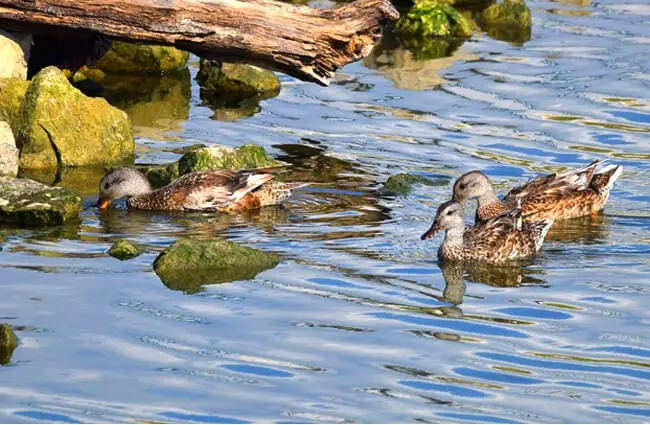

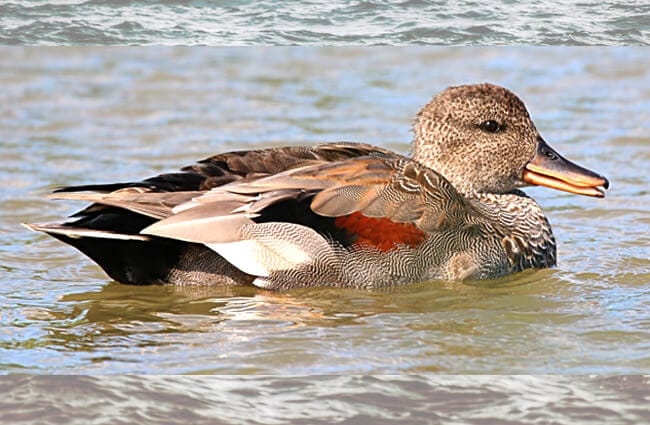


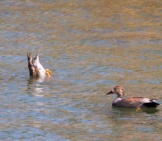

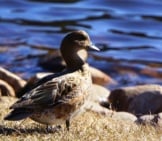
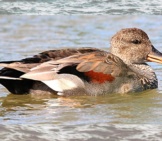
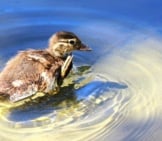
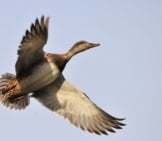
![Red Angus Closeup of a beautiful Red Angus cowPhoto by: U.S. Department of Agriculture [pubic domain]https://creativecommons.org/licenses/by/2.0/](https://animals.net/wp-content/uploads/2020/03/Red-Angus-4-238x178.jpg)












![Red Angus Closeup of a beautiful Red Angus cowPhoto by: U.S. Department of Agriculture [pubic domain]https://creativecommons.org/licenses/by/2.0/](https://animals.net/wp-content/uploads/2020/03/Red-Angus-4-100x75.jpg)

